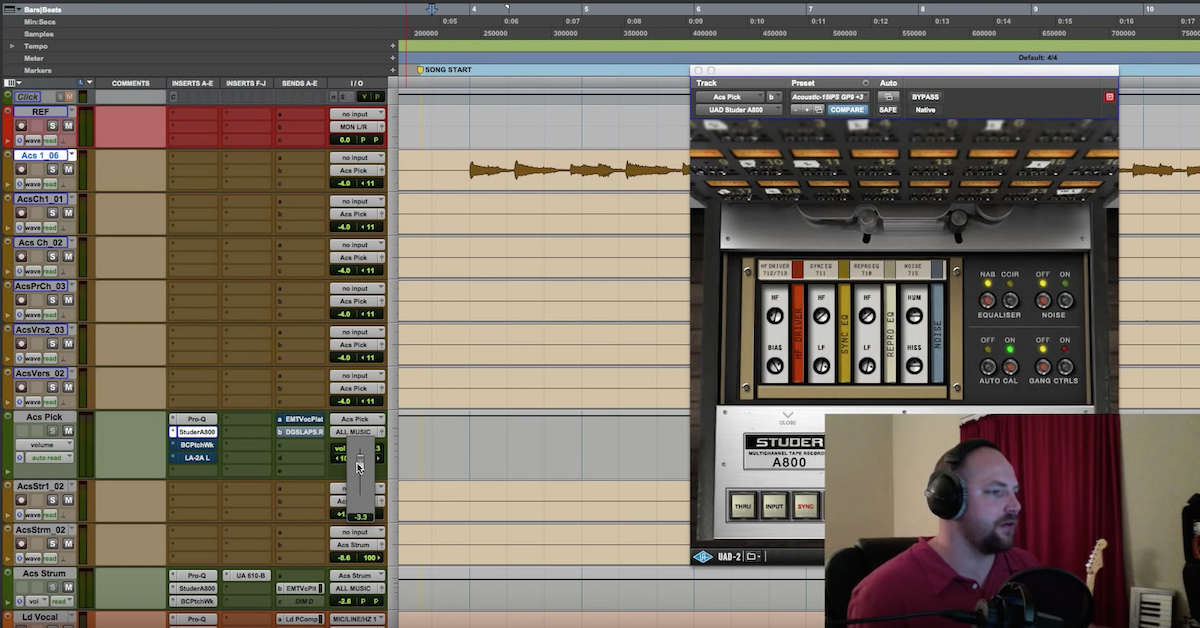How Different Pick Materials Sound on Acoustic Guitar
Article Content
I recently wrote an article on using picks made from different materials on electric guitar.
In this one, we’re going to discuss the effect it has on acoustic guitar.
These days, I change picks a lot. This is partly due to the fact that I don’t play just one style of music. The variation on sessions and gigs requires different tools.
Add to that the different requirements for acoustic and electric guitars. In general, I don’t use the same pick on acoustic and electric.
Engineering is an equation: x + y = desired sound. In order to get the desired sound, we have to do some reverse engineering. This can sometimes present a challenge. There is not a whole lot of data available on the recipe for most of our favorite sounds. Especially from the 70’s and earlier.
Sometimes, people may feel overwhelmed by all of the options. At first, it can make your head spin. Although there are many choices, you can narrow it down once you choose the desired sound.
This usually means not randomly searching for a tone. We start with the broadest adjectives for our desired sound. Bright and airy could be one.
Those two words immediately send me to a specific “file” of options. I generally know that I don’t want a heavy pick for a light and percussive Cat Stevens sound.
School
Let’s go back to school. We’re going to need a journal, pencil and a variety of picks that you’ll collect.
We’re going to use each pick and write down as many descriptions of the sound as we can. We can use this as a reference later on if we’re searching for a specific tone.
You may be wondering the importance of writing it down. Can it be that hard to remember later? If you don’t use an option for quite some time it gets covered with dust in your memory.
The journal lets us have an inventory of options. It’s quite possible you might only use a specific pick once in two years, but that one time is really important.
For these examples, I’m going to use the same picks as I did in the electric guitar article. It’s good to compare the difference a pick makes on acoustic guitar vs electric guitar.
The Fine Print
I’m using a Martin D16SPD miked with a Cascade Fat Head II ribbon (with Lundahl transformer) into an Mbox mini. I’m a huge fan of ribbon mics on acoustic guitar.
The mic was about 8 inches away aimed at the 12th fret. I use medium gauge strings on all acoustics except 12 strings.
Other Variables
It’s worth noting that I was picking the guitar in the same area for each section.
Moving your pick small increments toward the bridge or neck alters the sound.
I was picking near the rear of the sound hole (closer to the bridge).
I also give two examples of each pick. One from a song and one as an arpeggio. This allows us to further evaluate each pick.
—
Bone

This tone sits in the middle. The bass doesn’t pop out too much and the highs aren’t shrill.
Abalone

Brighter with less midrange. It sounds scooped and more jangly.
Graphite

The low-mids are making more of an appearance with this pick. It’s warm.
Ceramic
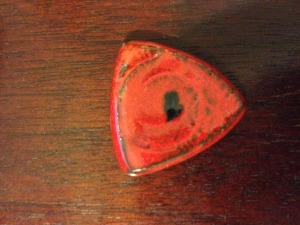
The highs are a little accentuated while keeping some of the mids. The low end is rich too.
Horn 1
This pick is all about midrange to my ears.
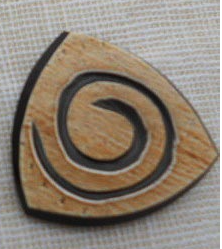
Horn 2
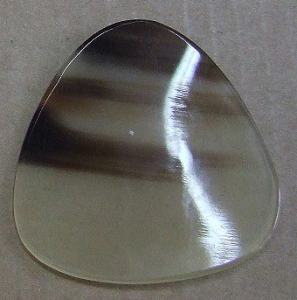
This pick is punchy but not thin. There’s a nice clarity to the picked notes.
Copper
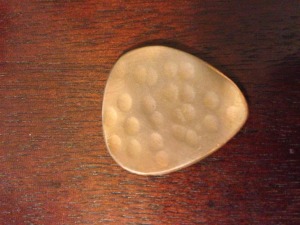
There is a hollowness to this pick that’s cool. The scratchiness from the metal adds a cool effect as well.
Brass
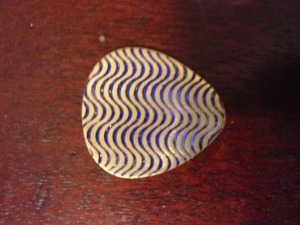
Brass is clearly brighter than copper. I think metal picks bring attention to the strumming on the higher strings. It gives them a character that sticks out.
Fender Celluloid Heavy
Old Faithful. Can’t go wrong with it. Although after listening to all the others, it does seem bit boring and flat doesn’t it?
Final Thoughts
Personally, I think the variations are huge. There are advantages to capturing it right at the source. Sure, you can EQ acoustic guitars, but that has some complications.
Let’s say you have the mic back a bit to let the guitar breath. When you do this you’re picking up more of the reflections in the room. The reflections may sound lovely. However, the guitar may lack something. When you try to EQ that in (or out), you’re affecting the sound of the room as well.
Changing picks will allow you to brighten or warm up the guitar without tampering with the natural acoustics.
For some recordings, the natural acoustics are vital to the sound. Now, get to work on your journal.
You can check out Rocky Mountain Slides to find all the picks I used in these examples.



